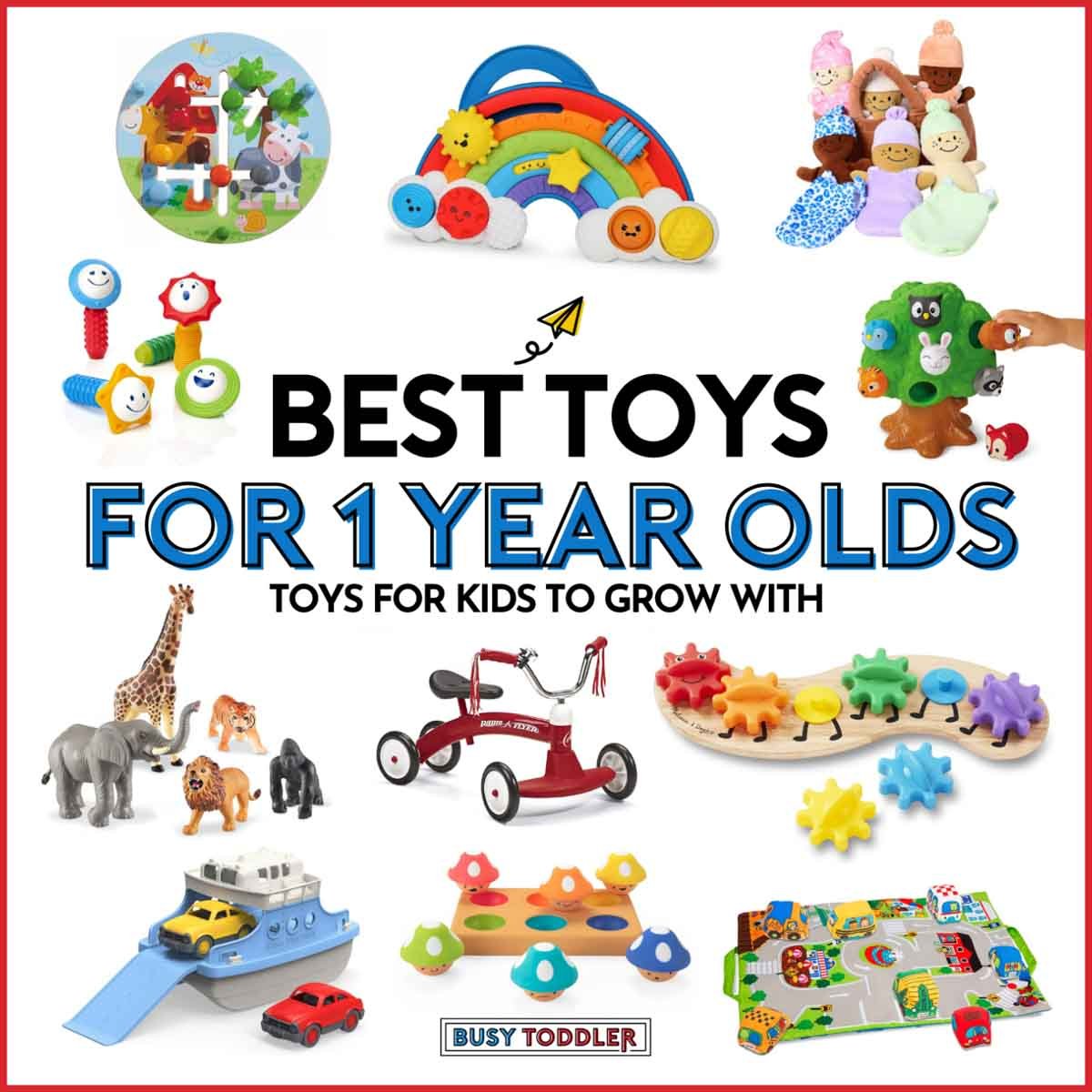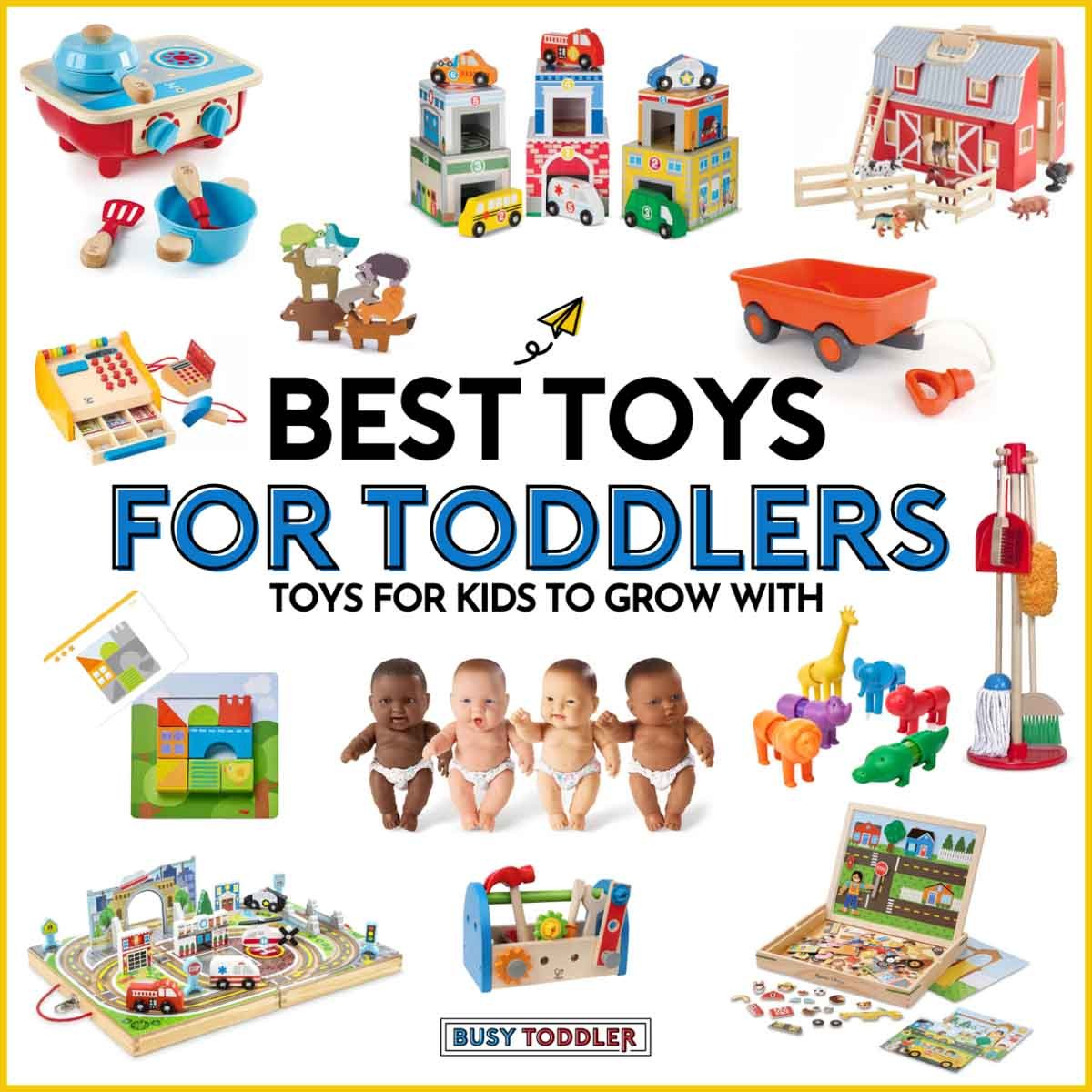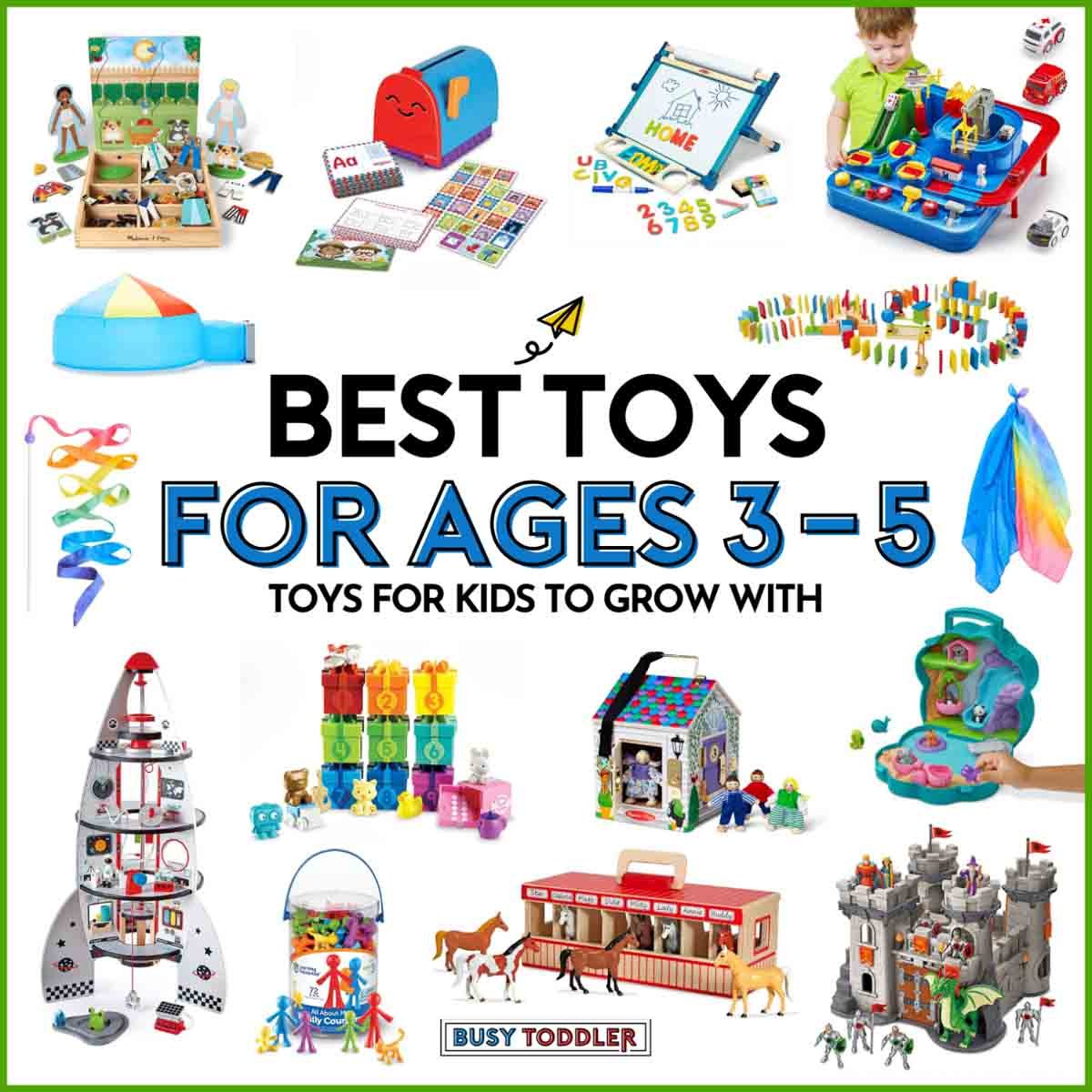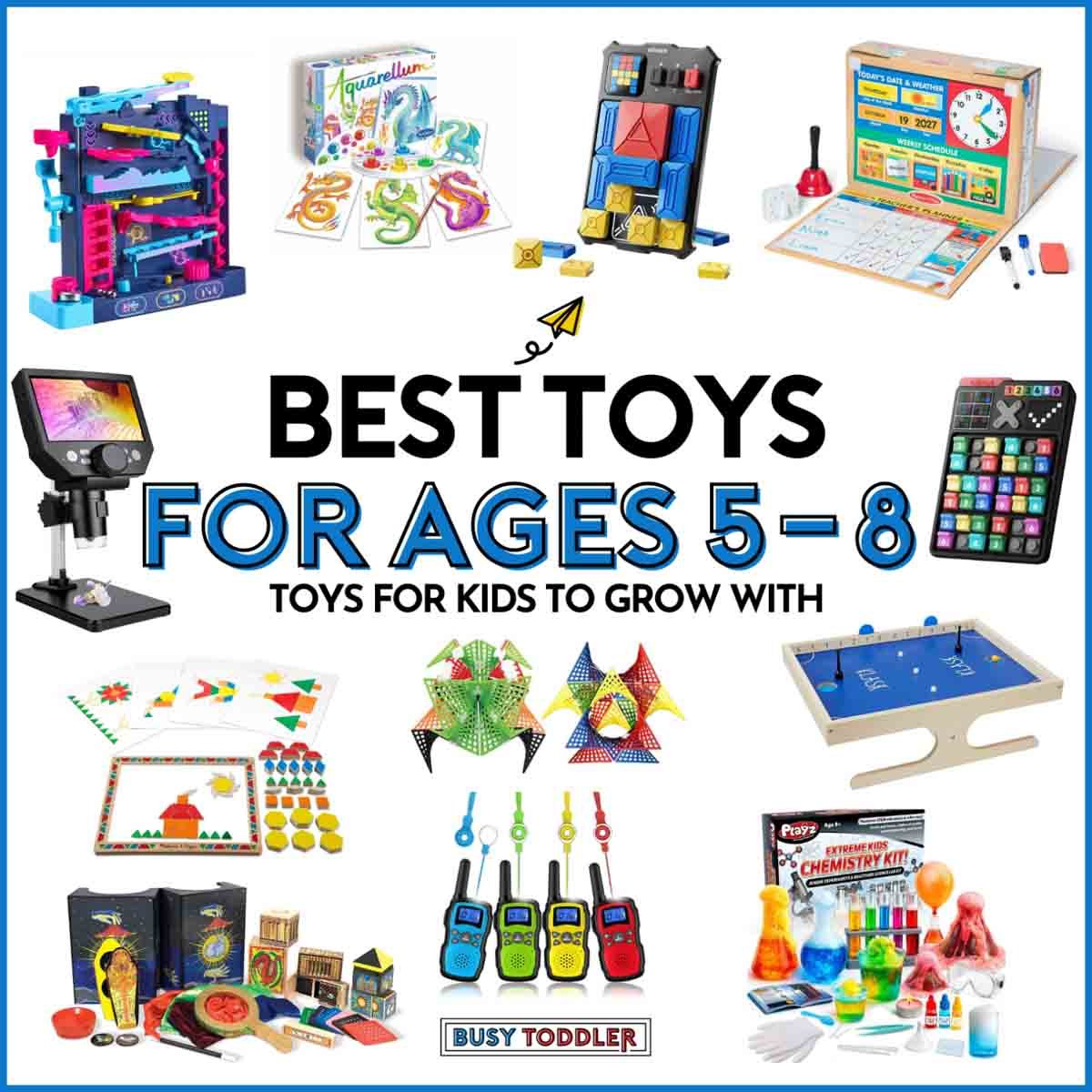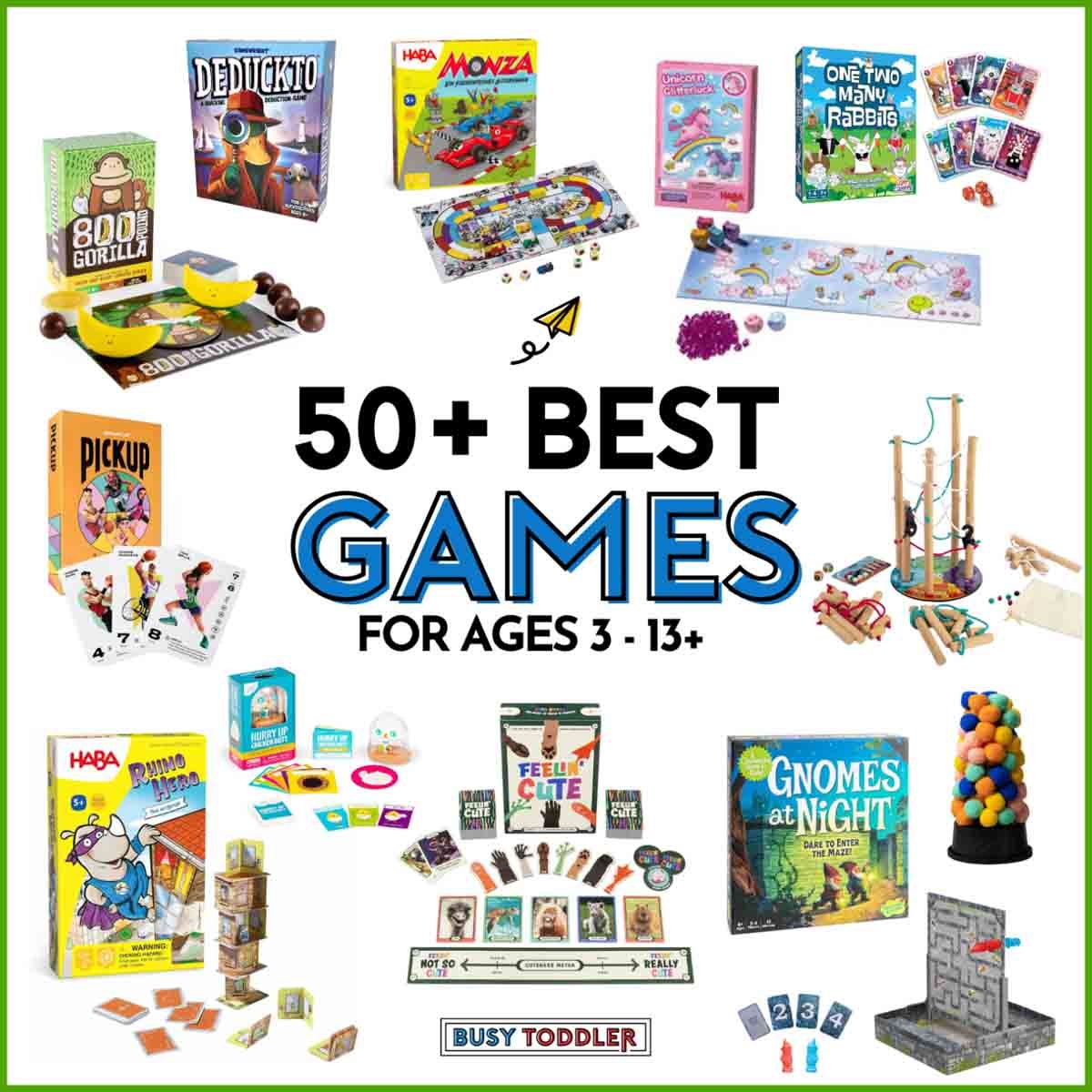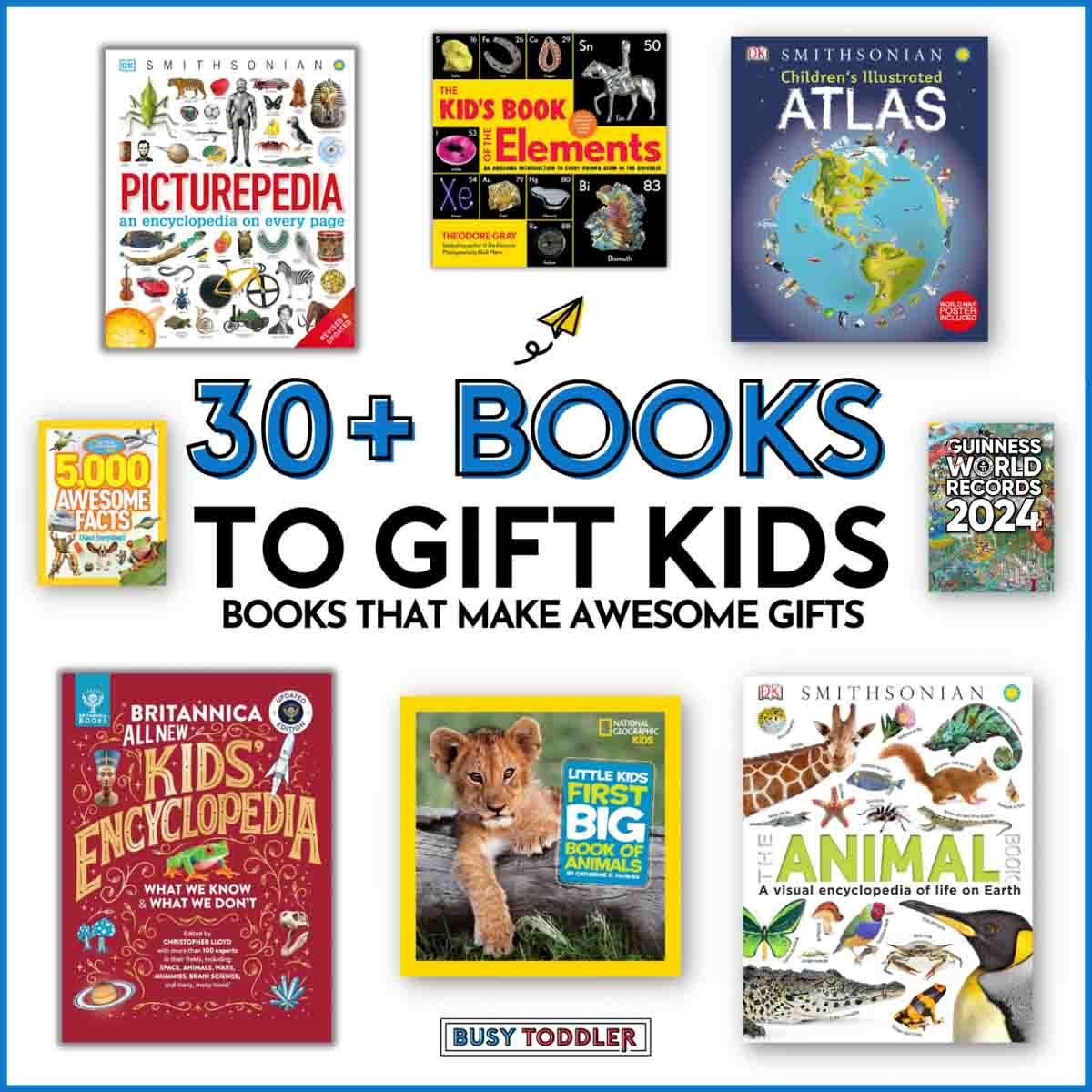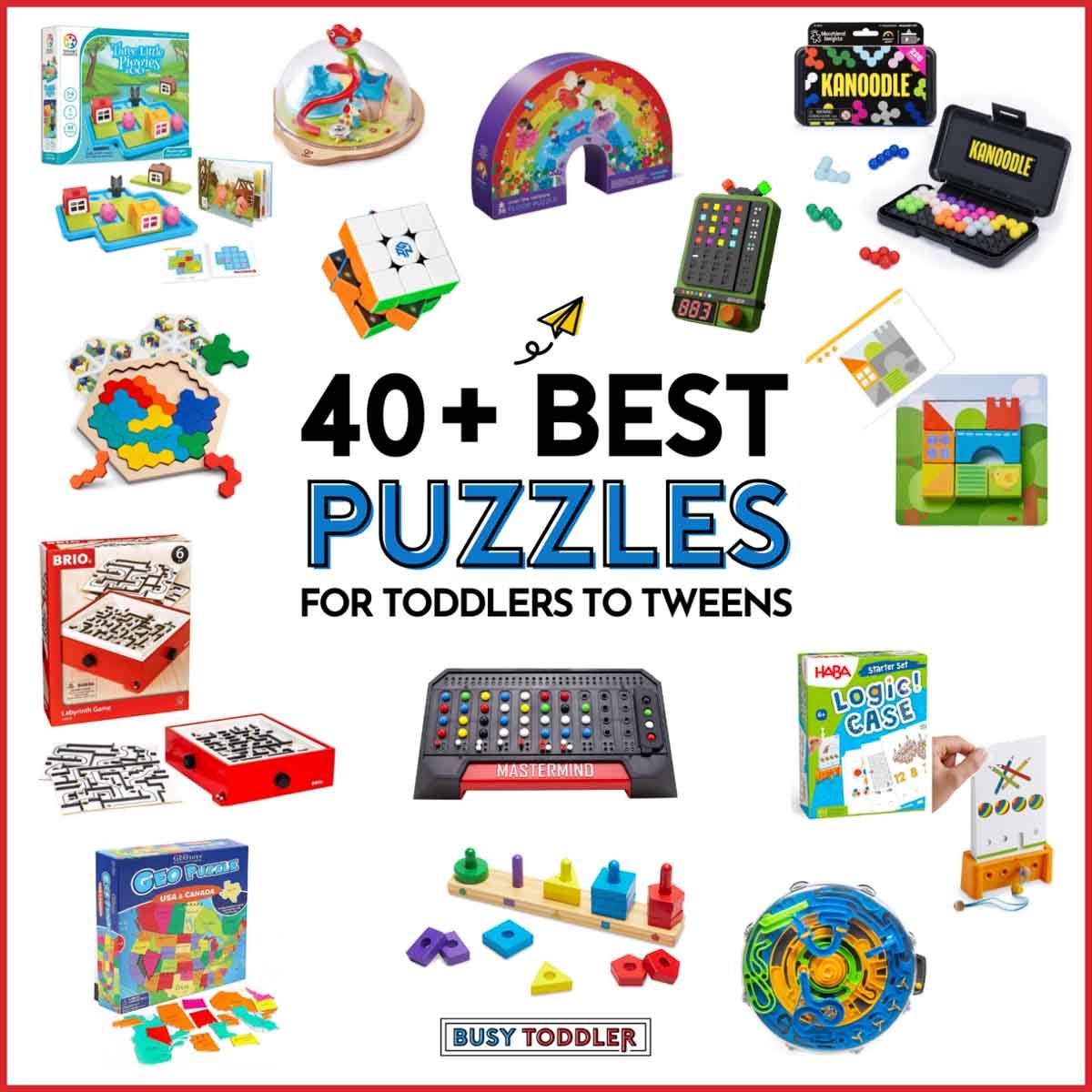Are you looking for the best toys for kids? You’ve found them in the carefully curated Busy Toddler gift guides, featuring only toys tested and loved by play experts (actual children). On this page, you’ll find the ultimate toy list broken into 16 gift guides for children ages birth to tween, along with non-toy gifts, board games, books, puzzles, and more.
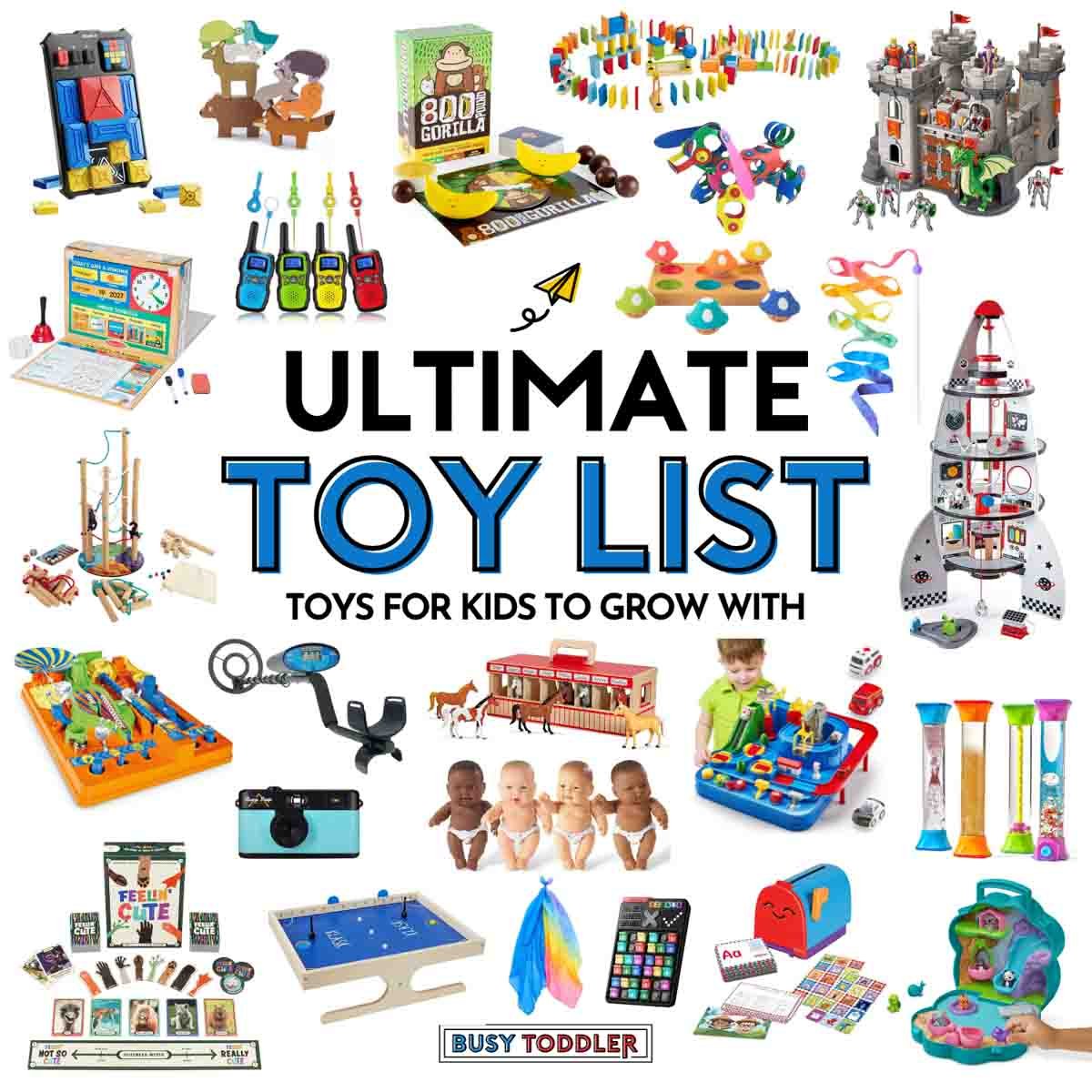
Before diving into my gift guides, let’s pause for an annual “Toy Ted Talk” about why toys matter so much. Toys aren’t just “stuff.” They’re essential tools for childhood development, yet they’re often undervalued. Too many marketing campaigns push flashy, one-and-done toys that clutter the home, but it’s time to rethink what kids really need for play and what the point of toys really is.
Toys are Not Just Stuff
Stop thinking of toys as clutter or frivolous items to fill gift boxes. Toys are not junk; they’re not just a holiday formality or something for kids to open.
Toys have real value.
Play is the work of childhood and toys are the tools for that play.
Just as you rely on quality tools for your own work, whether that’s a job, a hobby, baking, or woodworking, kids need reliable tools to fuel their play. And as any grown-up knows: good tools change everything.
It’s time to take toys seriously. They often get a bad reputation because of overflowing bins and the stress clutter can bring to parents, but that’s not what toys are meant to be. The right toys are powerful: they build skills, spark creativity, and nurture independent play. They can truly make (or break) a child’s ability to play on their own.
I’m not here to scare or guilt you, but I do want to emphasize that toys matter far more than we usually give them credit for. It’s time to move beyond seeing toys as clutter or mere entertainment and start viewing them as essential tools for childhood.

The Two Types of Toys
Most toys marketed to children fall into two broad categories: trendy toys and timeless toys. And let’s be honest: marketers push the trendy ones far more heavily.
Trendy toys are flashy and attention-grabbing. They often light up, make sounds, or rely on the latest technology. These toys tend to tell kids exactly how to play or even do the “play work” for them. They’re usually tied to a specific age range, fad, or pop-culture moment.
The excitement wears off quickly. Engagement fades, and before long, that once-must-have toy is just more clutter.
A note on exceptions: Some toys that seem trendy or short-lived might still hold real value, depending on your child’s needs and interests. The key takeaway is this: toys are tools. If a toy truly supports your child’s play and helps them engage, explore, or create, then it has value – regardless of how it’s marketed.

Why Do Marketers Push Trendy Toys?
Flip through any toy catalog and it’s obvious: the relentless push for trendy toys.
These are the gimmicks, the fads, and the “must-haves” of the season. They often lack a lasting quality and rarely hold a child’s long-term interest. And that’s no accident: it’s incredibly beneficial for toy companies. When a child grows bored, the trend shifts, or the toy’s appeal fades, adults feel pressure to buy something new. It’s a profitable cycle.
Trendy toys may shine at first and bring a burst of excitement, but the engagement usually doesn’t last. Before long, that once-hyped toy becomes clutter instead of a meaningful tool, just more “stuff” taking up space.
Why Timeless Toys Are the Best Toys for Kids
Timeless toys are different.
They grow with your child, supporting development from the toddler years well into the big-kid stage. These are often the simple, sturdy toys that stand the test of time – maybe even ones you may remember loving yourself. They invite children to lead their own play, adapt to new interests, and build critical skills year after year.
But here’s the catch: you won’t see much marketing for timeless toys. They rarely fill glossy toy catalogs, and that makes sense. When families own toys that last, they’re not constantly buying the next new thing. Timeless toys offer sustained play value, not quick-hit excitement.

Caregivers as Toy-Gatekeepers
Our role as caregivers is to act as gatekeepers for the toys that enter our homes.
It’s not about having the fanciest or most expensive toys. It’s about choosing the ones that truly support our children’s play, growth, and development. What works will look different for every child, but the guiding question should always be: Does this toy help my child learn, imagine, and grow?
And remember: more toys don’t equal more play, and flashier toys don’t mean better play.
How to Use Busy Toddler’s Gift Guides
The beauty of timeless toys is that they truly grow with your child.
In my gift guides, toys are listed by the youngest age they’re suitable for – not the only age. Just because a box says “8+” doesn’t mean it’s only fun for 8-year-olds. That label simply marks the starting point.
Think of my guides in the same way: they’re a starting place, not a stopping point.
Toddlers love wooden blocks. So do first graders.
Preschoolers are mesmerized by magnetic tiles, and so are ten-year-olds.
Five-year-olds enjoy many of the same art supplies as tweens (they just use them differently).
When you look through my lists, focus on what your child needs to play well and independently. Create a play-filled environment that works for your family. And don’t, even for a minute, limit toys by the age number on the box.
Toys Do Not Have a Gender
All the toys on my best toys for kids lists are for every child.
A child’s interest in a toy should be guided by curiosity and passion, not by gender. Every child deserves opportunities to build imagination, problem-solving, engineering skills, empathy, and creativity.
Limiting toys based on gender sends a restrictive message, and can close doors to learning and play. Let’s not do that.
Busy Toddler’s Gift Guides of the Best Toys for Kids
The ultimate list of the best toys for kids is here. Click the image for the list you want to see.



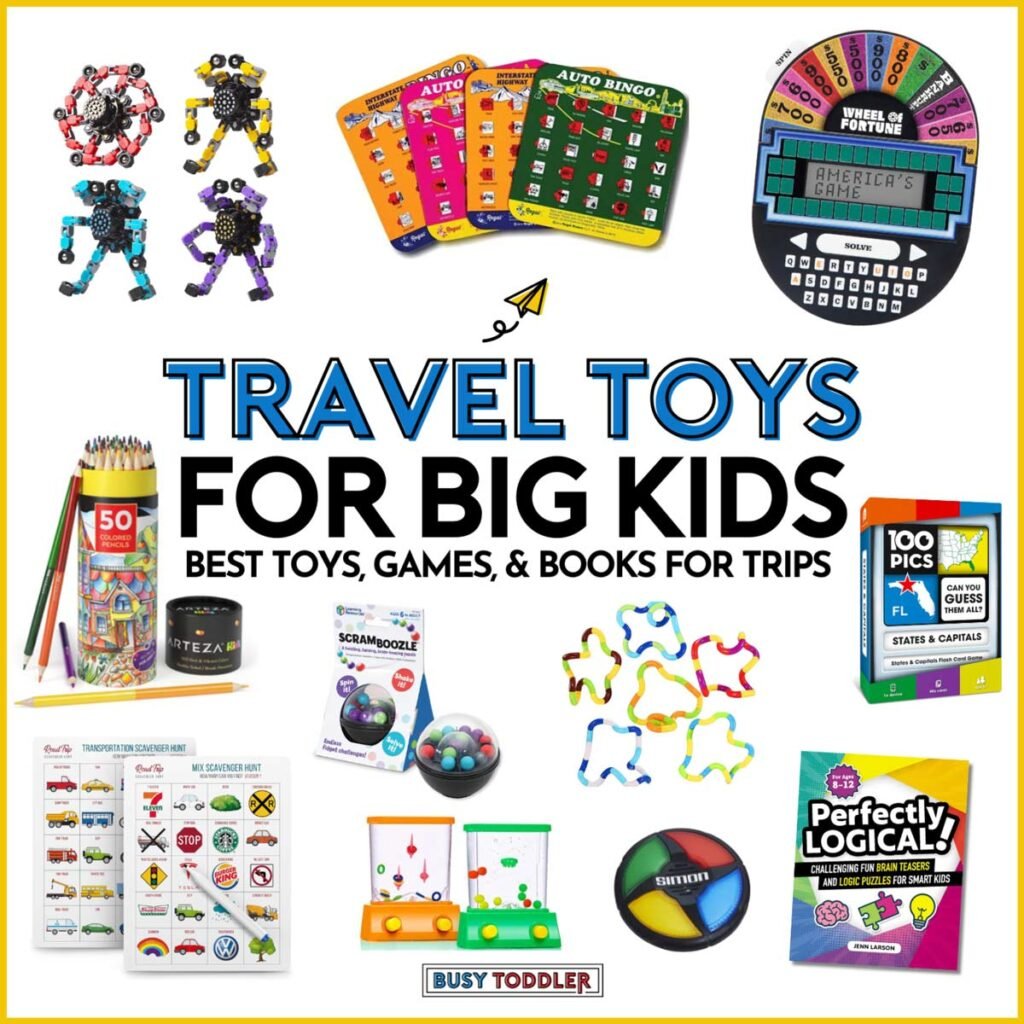
Frequently Asked Question
Best toys for kids are the toys that help a child grow, develop, and learn through play. This will look different for each child.
Generally speaking, this means a long-lasting toy where the child is in control and command is going to be the most supportive/best toy. The child isn’t being told what to do or how to play. They are making decision on how to use the toy – and that’s where the magic of learning through play unfolds.
Instead of looking for one specific “unicorn, mythical and perfect” toy, look at buying toys within categories. Children should have access to at least one toy from each toy category:
Toys that build (blocks), toys that help them create, toys for imaginary play (kitchen, wand, costumes, doll house), toys for care giving (doll or stuffy), toys that are animals, and toys that are vehicles.
That varies family to family. It depends on home size, budget, and number of children. It also depends on the needs of each child.
If you have a children who is struggling to find their play or unable to sustain play without significant adult assistance, audit their toys. They may need fewer options. You know that feeling of frustration when you can’t find something in a kitchen drawer? That’s how kids feel with an overwhelming toy box.
You can. Toy rotations are great, and a way to vary and change up the toys in the house without buying new ones. This isn’t something I can do at my house. We don’t have space to storm toys (no playroom or basement or giant garage). All the toys we have live in my kids’ rooms. This works just fine for us – no toy rotation needed.




